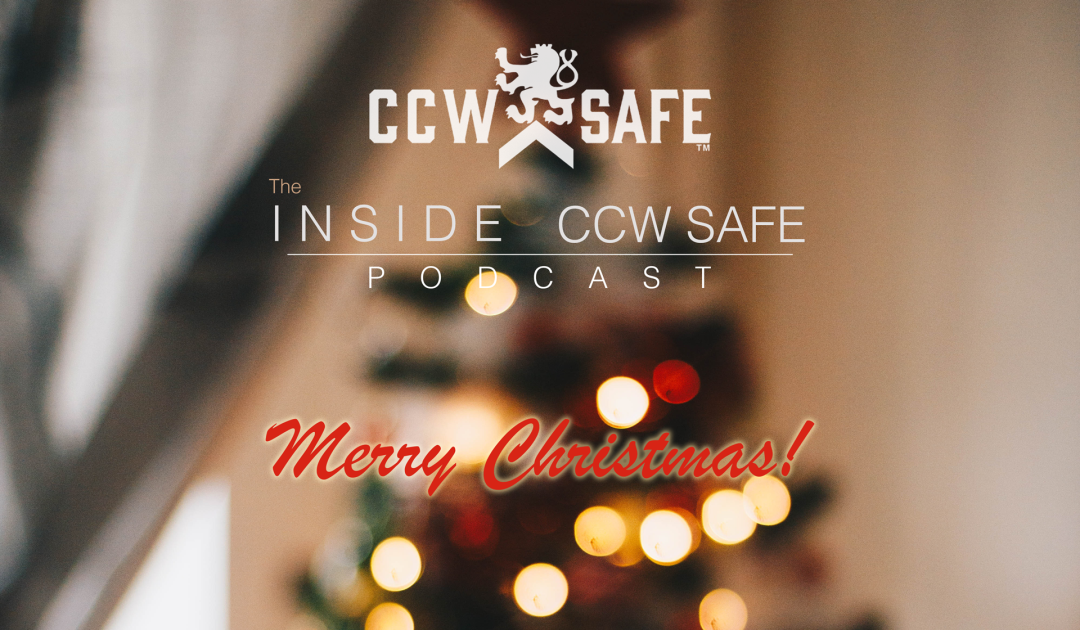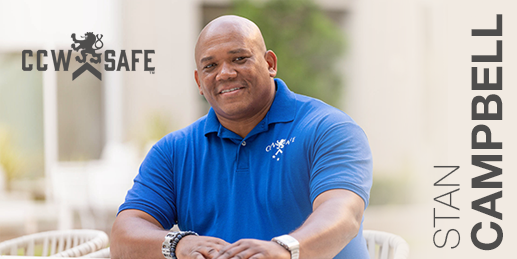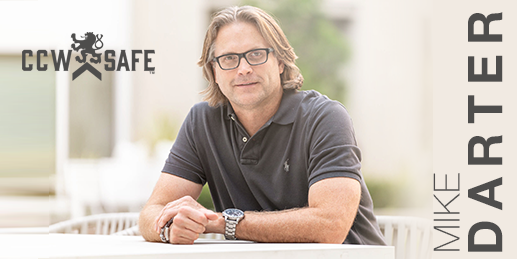
Posted on December 19, 2018
Inside CCW Safe Podcast: Episode 16- Merry Christmas & 7 Tips to Avoid A Deadly Encounter
Listen to the “Inside CCW Safe” Podcast
In this episode, Stan and Mike talk about a recent email they got from a member in reference to an incident he recently experienced. It was very similar to the Ted Wafer case incident, and because our member had read the “in Self Defense” articles on the case by Don West and Shawn Vincent, he was able to get through the incident without using deadly force. The member showed great confidence and restraint.
They also talk about 7 tips to avoid a deadly encounter, which are outlined below:
1. Avoidance is the best way to stay out of harms way. Many experts present situational awareness as the first step yet we have found if you take the time to identify and avoid high crime areas you are ahead of the game. In our course our CEO Mike Darter goes into detail about this and presents a few tools you can use to identify these areas in your city or while traveling.
2. Think like a cop and mentally practice for deadly encounters. One of techniques discussed in the police academy and practiced in patrol is mentally preparing yourself for successful deadly encounters. And was is meant by that is working through scenarios in your mind an attack or an escalated situation where you make decisions that are tactically sound and mentally go through the motions of finding cover and getting to your weapon. You should use this technique first placing yourself in known places you actually frequent. It would help to do this in real time as you park in a location and just go over the “What if” incident and use positive thoughts to make sure you win.
3. Positioning is the key in tactics. As a member of SWAT and as a self-defense instructor success in any operation or physical confrontation weighed heavily on superior positioning and readiness. As a concealed carrier you must think about positioning yourself in places to provide the best defensive advantage. When in restaurants I always request to sit either near a secondary exit or at least where I can see the front door. When pulling up to a convenience store I pull into the parking space where I can see the attendant and anyone in front of the counter before I leave my car. This way I won’t be caught off guard and walk into a robbery in progress. I make sure I plan my gas and ATM runs during the day and choose locations that don’t have a bunch of blind spots or are isolated.
4. Training in Situational Awareness is more important than range time. We all have the ability to identify when something is out of place or someone does not match the surroundings. Practice people watching as you enter any situation so you can pick out potential threats. We all get drawn into technology and concentrate on our cell phones more than we do our environment. As a concealed carrier you always should pay attention so when your phone goes off with a ring or text vibration use that first alert to remind you to visually check your surroundings and note where you are and pick it up on the second or third ring. Don’t spend so much first You have a gut feeling Be aware and position yourself Get help started your way.
5. Call for help if you can before and after you react. In those situations that you either walk up on or present themselves where you can call the police do so. Many concealed carriers get themselves into trouble trying to intervene with a secondary dispute before calling 911 to get police started. Police officers call for backup and you should too. And if there is no time and you have to react and you successfully de-escalate the situation you should still call the police to make them aware of the suspects behavior. If you used a threat of force by displaying your gun or pointing it at the suspect make sure you call 911 after the threat is over and you are safe. Many of our members have found the need to display their weapon and after the suspect leaves that person is the first to call 911 and our member would be approached and sometimes be forced to deal with the consequences as if they are the suspect. Some have also been arrested. Please don’t let this be you.
6. Don’t be the Aggressor in a Road Rage Incident. You have to remember when you have an interaction with another driver don’t get pulled into their “Moment in crisis.” You have always remain calm and understand it could be someone with a mental illness or going through an emotional crisis. It is best to get the tag number and only follow long enough to get what is needed to give the suspect, car and suspect description to the police. Follow at a safe distance and do not pull over if the suspect invites you to do so. If you are already stopped don’t engage in the verbal back and forth by rolling down your window and please don’t allow the person to talk you into getting out of the car because you could be seen as the aggressor or your actions can be seen as helping to escalate the conflict prior to the use of deadly force. Stay in control and drive away if possible.
7. Know your limitations and when to tactically retreat. I have many members who try to de-escalate and find that they are dealing with someone that is mentally ill or on drugs. You are not a doctor or an officer so please know your limitations. Just because you have a gun does not mean that you have to continue moving forward. You could continue to talk to the person calmly as you put a barrier between you and look for an avenue of escape. You could use some of the techniques suggested in our course but try to recognize the signs associated with a pending attack. If you see the person looking around nervously, balling their first, taking clothes off or posturing with their body language; it is now time to disengage. If you allow them to believe they won this stage of conflict, you will actually be the winner because they won’t force you into a deadly force incident. Always keep your eyes on them as you back away so you can see a weapon is not being accessed.
These are just a few tips and suggestions to keep you out of trouble and becoming involved in a deadly force encounter. Please remember to always respond to every situation and make the same decisions you would with a firearm that you would if you did not have a firearm.
We want to wish everyone a Merry Christmas and Happy New Year, and as always, stay safe!
Time: 59:32
Subscribe on iTunes

Stan Campbell, Co-Founder/COO
Stan Campbell has over 20 years of experience as a police officer in Oklahoma City. He retired as a Lieutenant over a street crime team, and spent over 10 years on the Tactical Unit (SWAT) and has spent 15 years developing and teaching self-defense curriculum. Stan is a certified National self-defense Instructor and has also instructed officers in British Territories. Stan has extensive experience and knowledge in the critical incident command system, officer involved shootings and use of force incidents.

Mike Darter, Co-Founder/CEO
Mike was a police officer in Oklahoma City from 1991-2001, and a federal contractor for the DOJ from 2001-2011. During his career, Mike investigated and testified in hundreds of violent crimes, including shootings, homicides, and other violent felony crimes. Mike was involved in a shooting as a police officer and went through a lawsuit from that shooting. The lawsuit was later dismissed, but his experience is what led to the creation of CCW Safe.